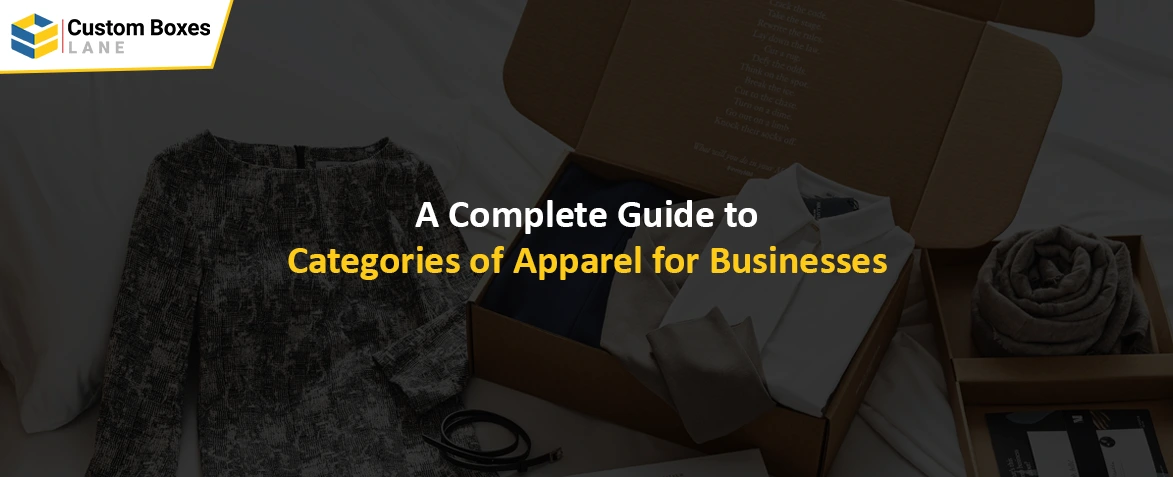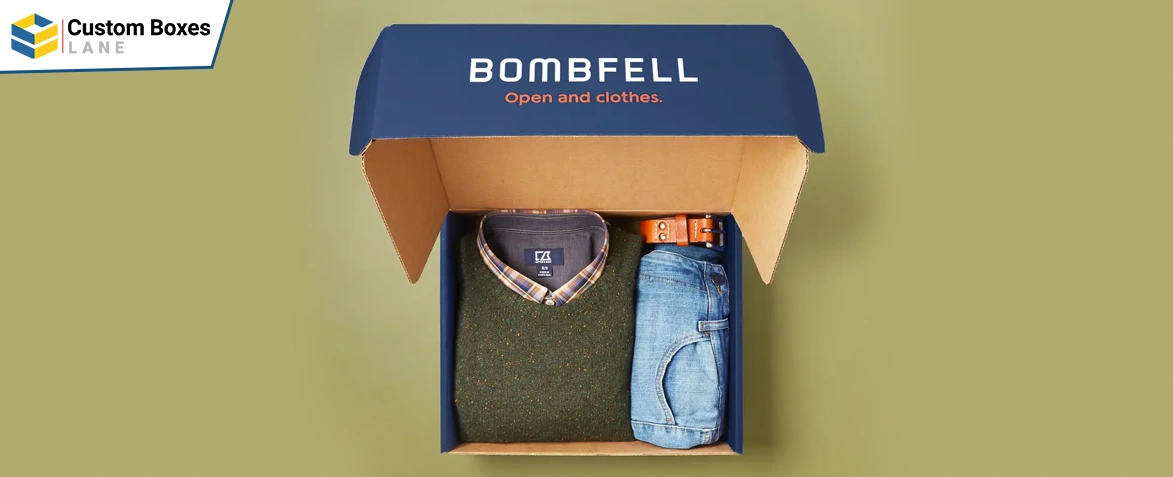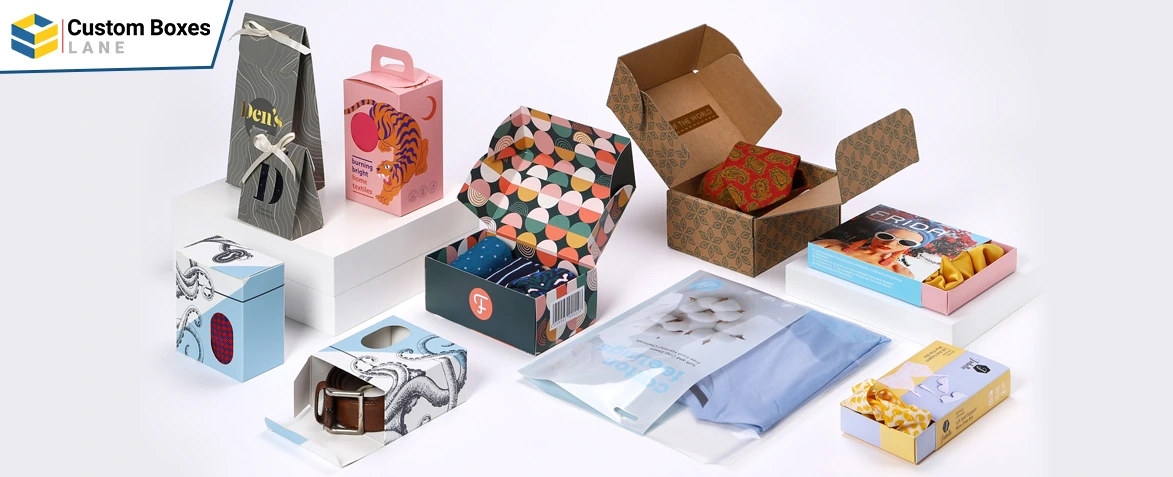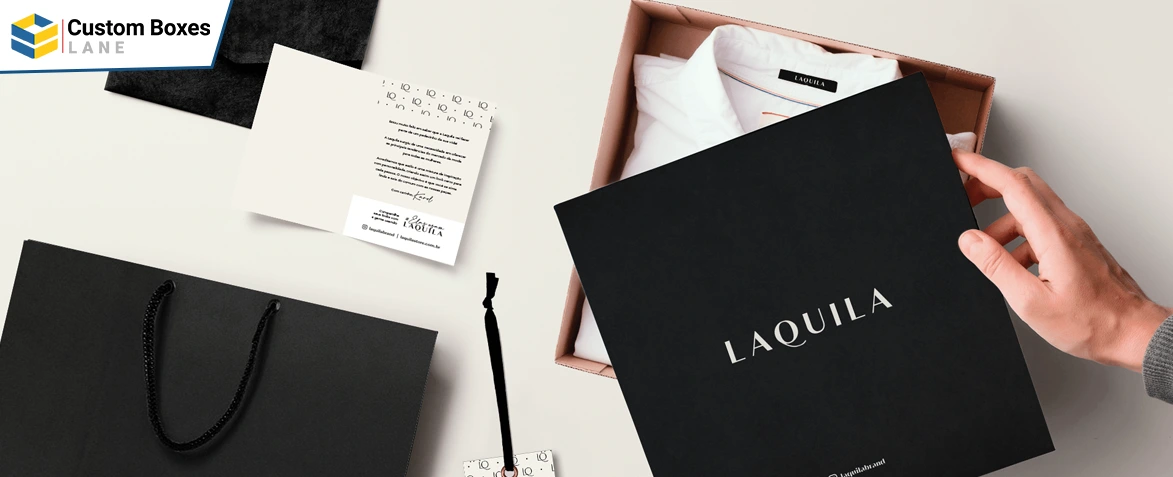A Complete Guide to Categories of Apparel for Businesses
2025-05-20 10:57:34

The apparel industry in the US is a multi-billion-dollar market. And businesses are constantly evolving to meet consumer demands in the apparel industry. Whether you're a startup or an established clothing brand looking to expand — understanding the apparel categories and industry dynamics is crucial. The right product mix can help you attract potential customers and maximize sales.
Beyond choosing the right apparel, one factor that often gets overlooked is packaging. Apparel packaging is a key element in brand perception, customer experience, and logistics. But we’ll get to that later. First, let’s explore what apparel is and the major categories that define the US apparel market.
What’s Apparel?

Apparel refers to different types of clothing and garments that people wear to cover and beautify their bodies. It includes a wide range of items such as suits, blazers, tops, dress pants, snickets, slip-ons, and bottoms. Businesses can boost customer experience by serving them a perfect blend of aesthetics and functionality.
What are the Different Categories of Apparel?
Like any other industry, apparel also has many different types of categories. Developing a basic understanding of these categories is crucial for clothing brands to make a statement in the market. Have a look at popular apparel categories in the fashion and clothing market:
Casual Wear
Casual wear is the most popular apparel category in the US. This category includes comfortable, versatile clothing for everyday activities. With more people working remotely and prioritizing comfort, casual wear sales have skyrocketed. Some popular casual wear items are:
- T-shirts and Polo Shirts
- Jeans and Chinos
- Hoodies and Sweatshirts
- Casual Dresses and Jumpsuits
Outwear
Outerwear is a seasonal necessity, especially in states with extreme weather conditions. From winter coats to lightweight rain jackets, this category includes functional and fashionable pieces. Key items in outwear include:
- Jackets
- Coats
- Blazers
- Cardigans
Sportswear
This category refers to clothes and shoes. Sportswear is designed to enhance performance during exercise or other physical activity. Athletes and fitness enthusiasts prefer sportswear due to its high-level comfort, appealing look, and flexibility for their fitness-related tasks. Major sportswear items include:
- Tracksuits
- Gym Shorts
- Swimwear
- Sport Jerseys
Winter Wear
Winter wear blends warmth-wearing items with stylish and fashion-forward designs in the winter seasons. Customers spend chilly days with cozy warmth and elegant winter wear items. Key items in the winter wear category include:
- Sweaters
- Shawls
- Scarfs
- Jackets
Traditional Wear
Traditional and ceremonial wear covers attires and accessories that reflect profound expressions of cultural heritage and ancestral pride. For example, Native American regalia, cowboy, and patriotic red, white, and blue outfits evoke a sense of tradition and style. Some other examples of traditional wear include:
- Ponchos
- Huipils
- Flannel Shirts
- Quadrille Dresses
Workwear
Workwear is designed for specific industries such as construction, hospitality, and healthcare. Safety, durability, and functionality are key considerations for this category. Workwear items bridge the gap between style and performance for working professionals such as doctors. Some of these popular items are:
- High-Visibility Jackets & Vests
- Scrubs & Lab Coats
- Chef Coats & Aprons
- Steel-Toe Boots & Non-Slip Shoes
Footwear
This category broadly covers shoes and other feet-related items that combine protection, durability, and elegance. Athletic shoes, dress shoes, work shoes, and specialty shoes are common footwear items for women, men, and children. Other popular footwear items include:
- Sandals and Sneakers
- Oxfords and Heels
- Cleats and Ballet Shoes
- Stilts and Boots
Sleep Wear
Sleepwear refers to clothes or suits that people wear at night which boosts their sleeping experience. Sleepwear serves the perfect blend of comfort, softness, and coziness with premium style. Let your customers enjoy comfortable sleep by choosing sleepwear outfits for them such as:
- Pajamas
- Nightgowns
- Robes
- Loungewear
Accessories
Accessories refer to wearable apparel items designed to cover the waist, head, neck, and hands with style. With apparel accessories, your brand can leverage the potential of your brand story and deeply resonate with customers. Some common accessories are:
- Belts and Ties
- Beanies and Hats
- Toques and Scarves
- Gloves
Apparel Packaging Industry
Now that we’ve explored the diverse categories of apparel, let’s discuss an essential but often overlooked element of success - packaging. No matter what category of apparel your business specializes in, the way you present and deliver your products plays a significant role in customer perception.
Business owners should care because high-quality apparel packaging can set you apart in the competitive market. Whether you’re shipping delicate luxury wear or bulk uniforms, investing in well-designed packaging enhances customer satisfaction and retention.
Custom apparel packaging boosts brand recognition and ensures garments arrive in pristine condition. With the right apparel packaging, your brand offers protection, comfort, and a means of self-expression.
Packaging Types for Different Apparel Products

Businesses in the apparel industry are aware of how effective packaging plays a crucial role in sales and branding. They pick the right packaging materials and customize them tailored to their needs.
If you are a brand selling apparel, you might need to know the right packaging solution to complement product needs. Explore what packaging type you should use depending on your business needs:
Folding Cartons
Folding cartons are ideal for protecting small and fragile apparel products. Shirts, blouses, and other apparel and accessories are among those products. Use these cartons to reduce the impact of carbon footprint as they are made from eco-friendly materials cardboard and paperboard. Boost revenue by attracting eco-aware customers by using folding cartons for apparel packaging.
Mailer Boxes
Mailer boxes provide supreme strength to inside-packed apparel products against knocks and bumps during rough shipping conditions. With robust construction, these apparel boxes are designed to withstand puncture and tear resistance. Whether you are a clothing or shoe brand, use mailer boxes to ship clothes and shoes securely.
Apparel Packaging Bags
If you are a retail or luxurious brand, apparel packaging bags can help you build a unique brand identity and expand your customer base. Here are popular apparel packaging bag categories you may consider tailored to your business needs:
Gift Bags
To captivate luxury-conscious customers, use gift bags to add a touch of elegance to your apparel packaging. Gift bags grab the attention of customers more instantly than the average shopping bag.
Tote Bags
Serve the perfect blend of style and reusability by offering tote bags. Made from breathable fabric cotton, tote bags are ideal for packing swimwear products.
Plastic Bags
Provide high-level protection to different types of apparel products with plastic bags. Poly mailers are a popular type of plastic apparel bags for shipping designed to protect products from dirt and moisture.
Paper Bags
Build an ethical image of your brand by choosing eco-friendly paper bags for packing apparel items. Brown paper bags are the best alternative to plastic bags in terms of sustainability. Although they can’t efficiently resist harsh environmental and shipping conditions such as plastic bags.
Things to Consider While Choosing Apparel Packaging
When it comes to choosing apparel packaging, here are some crucial elements to consider for upscaling your brand experience:
Type of Apparel
If your brand sells casual wear such as jeans or t-shirts, you should opt for poly mailers. Because they offer enough protection to daily wear items while shipping. But choose boxes in the case of luxurious clothing like suits and dresses with sturdier packaging.
Shipping Price
The size and weight of your apparel packaging materials affect the shipping costs. If you choose plastic or paper bags for shipping your products, their cost remains relatively cheap owing to its lightweight. But if you want to send luxurious apparel products in mailer boxes, it will raise shipping costs due to heavier weight.
Environmental Sustainability
In case, you want to convey a sense of environmental responsibility on behalf of your brand, then opt for an eco-friendly apparel packaging option. Paper-based boxes like cardboard, paperboard, or kraft boxes are designed to attract eco-ware customers.
Customized Packaging
Leverage the power of custom packaging to design your bags or boxes in any style, size, and material to complement your product packaging. With limitless customization, your brand creates a memorable unboxing experience for your customers.
Where to Find Reliable Apparel Packaging?

The apparel industry is diverse and offers opportunities for brands from casual wear to high-end fashion. Whether you’re a startup or well-established apparel brand, understanding your category is key to your brand success.
And don’t forget great fashion deserves great packaging. Your customers’ first impression isn’t just about the clothes—it’s about the experience. Elevate your apparel business with Custom Boxes Lane. And enhance customer loyalty with premium quality packaging.
Ready to enhance your brand with custom packaging solutions? Make sure your apparel arrives in style!

